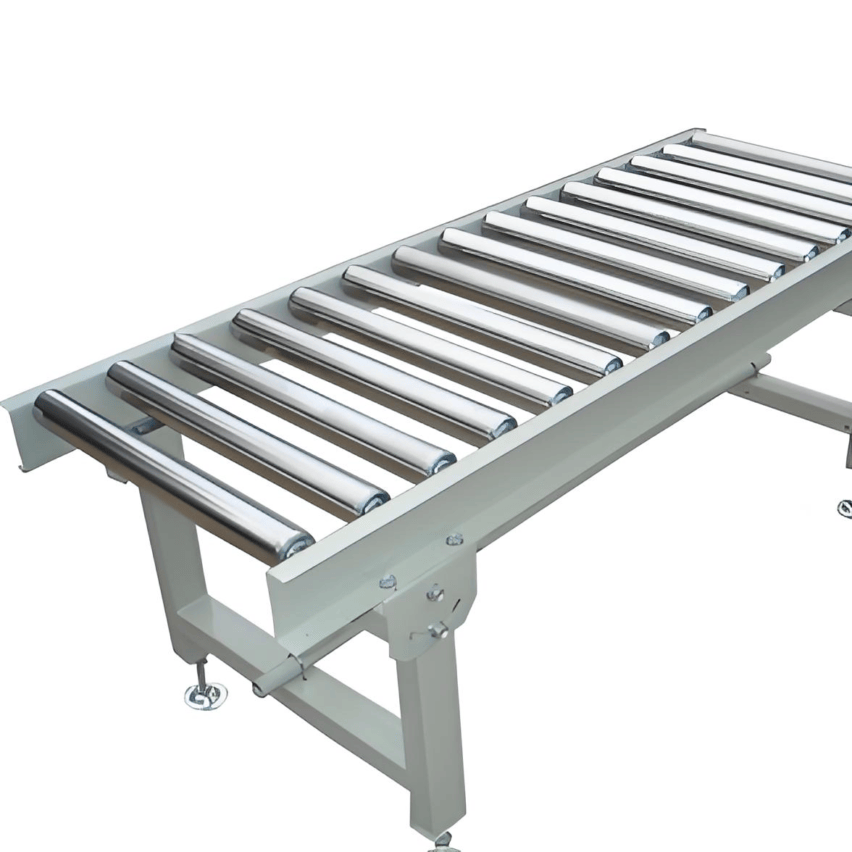I. How does thickness affect the core performance of a conveyor belt?
Ever pondered when you see dough sticking to a conveyor belt on a high-temperature baking line, or witness steel slag melting through a belt in a metallurgical shop.What difference does each 0.5mm increase in thickness make?The thickness of a silicone conveyor belt is by no means a simple number, but a physical code for load carrying capacity, abrasion resistance and energy efficiency:
-carrying capacity: For every 1 mm increase in thickness, the theoretical load increases by approximately 351 TP3T (e.g. 50 kg/m² for a 2 mm belt → 70 kg/m² for a 3 mm belt).
-Wear life: 3.0mm thick belts last 3.2 times longer than 1.5mm in ore transport, as the base layer cushions the impact of the material.
-cost of energy consumption: 4.0mm belt consumes 18% more energy than 2.5mm, but downtime maintenance frequency is reduced by 60%.
Users ask: Is more thickness better?
-- For transporting light electronic components, 3mm thick tape may cause indentation of the product, while 1.5mm thin tape is more accurate.
Second, how to match the thickness of gold in different industries?
1. Food processing line: 1.5-2.5 mm fine balance
The reason why 2.0±0.2mm is commonly chosen for conveyor belts in bakery factories stems from a triple precision calculation:
"Health needs: 2mm belt for seamless closure and no embedding of dough residues.
"thermal efficiency: Below 1.8mm, undercooking of the bottom of the loaf is likely to occur, while above 2.2mm, it reduces the speed of maturation.
"economic debtA bakery company measured: 2.0mm belt than 1.5mm annual savings of 120,000 maintenance costs, than 2.5mm electricity costs 80,000
2. Metallurgical/Mining Scenarios: 3.0-5.0mm Survival Rule
In the face of 800 ℃ ingot impact, why Germany BGK's S-5108 type stick with 4.0mm?The key is in the composite structure:
◇Ceramic armour layer: 0.8mm surface fused aluminium oxide against 1500°C slag
◇Elastic buffer layer: 2.2mm silicone matrix absorbs impact energy
◇backbone reinforcement: 1.0 mm aramid fibres guarantee longitudinal tensile strength.
Users ask: How thick do I choose for pipework transport in a chemical plant?
-- Strong acid environment requires 3.0mm + silver ion antimicrobial layer, thin tape is easy to be corroded and perforated.
III. Selection parameters comparison table: thickness and other elements of the linkage formula
| Core parameters | Correlation law with thickness | Typical Scenario Examples |
|---|---|---|
| bandwidth matching | Thickness should be ≥3mm for width >500mm. | Grain conveyor belt width 800mm with 3.5mm |
| surface texture | For each additional 0.3mm of raised grain, the thickness should be increased by 0.5mm. | Minimum thickness of non-slip patterned tape 2.0mm |
| temperature limit | 2.5mm substrate required for -60℃~260℃ range | 2.8mm cold-resistant type for quick-freezing line |
| Guide Strip/Edge | Additional thickness of 0.8-1.2mm is required to add the guide strip. | Electronic board conveyor belt guide zone up to 3.2mm |
Fourth, the purchase of decision-making flowchart: three steps to lock the accurate thickness
STEP 1 Weighing materials→ 3.0mm for single >5kg +/- 1.5-2.5mm for <2kg
STEP 2 Measure the temperature difference→ Temperature change >100°C/hour (e.g. quick-freezing → baking) 2.8mm crack-resistant type required
STEP 3 Look for wear and tear→ Sharp-edged materials (e.g. ores) thickness increase factor = height of edges (mm) × 0.3
An automotive parts factory has neglected the third step: the thickness of the transport belt is only 2.0mm, by the bolt angle cut 23 times in six months; increased to 3.2mm after three years of zero breakage. Can be seenThickness is not an isolated parameter, but a fulcrum of systems engineering. The next time you shop, you may want to grab a handful of transported material in the palm of your hand - its weight, angles, temperature, has quietly told you the answer to the thickness.













